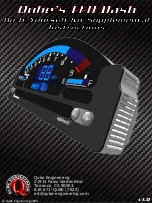
145
Interior equipment
Cargo net
3
• If possible, avoid having the rear seat
folded down when driving with a heavy
load, because the anchoring possibili-
ties are restricted when the rear seat
is in this position. That the rear seat
is in the upright is a basic require-
ment for protection against cargo
displacement in the event of a
crash.
• Improve safety by fastening the outer
safety belts. Check that the red "indi-
cator-flag" next to the opening han-
dles is not visible. If the red "indica-
tor-flag" is visible the backrest is not
locked.
• Match your speed and driving style to
how the car is loaded. The handling
characteristics of the car can be
affected since a load in the trunk will
alter the car’s center of gravity.
• An object weighing 55 lbs. (25 kg) cor-
responds to a weight of 2200 lbs.
(1,000 kg) in a front-end collision at
32 mph (50 km/h).
• Adjust the car’s load (passengers and
luggage) so that the gross vehicle
weight and the axle weight are not
exceeded, see page 284.
WARNING
• Never overload the cargo net
3
. If the
elastic breaks this may cause per-
sonal injury. Do not use a cargo net
that shows signs of wear.
• Never use the elastic floor net
3
and
elastic side net
3
when the rear seat is
folded down. These nets are only
intended to keep light objects tidy, not
for the anchoring of loads.
• Secure the load in the luggage com-
partment firmly. Using a cargo net is
not considered as load securing.
• The only purpose of a cargo net is to
prevent light objects from being
thrown forward into the cabin during
heavy breaking.
93_US_MY09.book Page 145 Tuesday, April 15, 2008 10:30 AM















































